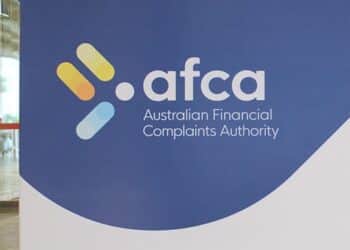Synchron director Don Trapnell told ifa the dealer group had seen its risk new business drop from $23 million to $19 million over the 2020 calendar year, as education standards and restrictive remuneration levels contributed to the continuing exit of risk specialists from the advice sector.
“We’ve got a problem with fewer and fewer life insurance advice specialists staying in the industry,” Mr Trapnell said.
“Right now we’ve got our politicians and regulator saying we have a problem with the cost of advice in this country and the panacea that is being offered is scaled advice. Maybe the panacea that should be offered is a revisit to the LIF scenario and a look at the remuneration model of life insurance advisers.
“If we want to reduce the cost of giving advice to the consumer, we need to be able to create a workable business model for the adviser.”
Mr Trapnell said ASIC needed to look at comparable markets overseas when conducting its review into the LIF commission settings, where commissions for risk advice were set at a much higher level and lapse rates remained similar to those in Australia.
“There are two markets in the world like Australia – the UK and New Zealand markets have similar distribution structures and products to Australia,” he said.
“UK commissions are anything in excess of 200 per cent down to 110 per cent, and New Zealand commissions about 180 per cent to 120 per cent. Australia’s are 60 per cent, so if the premise of LIF says high commissions drive poor selling practices, one would expect the lapse rate of New Zealand and the UK would be double the lapse rate of Australia.
“The New Zealand national lapse rate is 14 per cent and the UK national lapse rate is 13 per cent, Australia is the same, so the basis of LIF was predicated on a lie.”
Mr Trapnell said the disconnect between what consumers were prepared to pay for life insurance advice and what advisers needed to charge was locking the middle market of Australians out of the opportunity to purchase insurance.
“Advisers are walking away from any case that is under $3,000-5,000 – they just can’t afford to give the advice, whereas once upon a time it didn’t matter what the scale of the advice was because the averages looked after themselves,” he said.
“Our regulator and minister are stating that advisers need to start charging fees, but the disconnect is that the consumer is happy to pay between zero and $300 for advice that costs between $3,000-5,000 to give. So the disconnect is too strong, and the answer is to turn the remuneration to something that is workable to the adviser and is workable to the consumer.




[quote=Big Mike]Is that why you drive around in a Ferrari Don [/quote]I wish Big Mike!! Too fast for an old bloke like me.
Those involved in the day to day operations of the risk industry can relate exactly to what Don is saying. We can carry on all we like but I have to ask though, do the regulators actually think that having a viable risk advice industry is a desired outcome? Their actions over recent years suggest that they don’t, and I’ve ever heard anyone say they do.
Yup. This.
Agree 100%
Sadly the bastards are not listening!
Well said but I just don’t think the regulator or politicians care (there are no votes in it for them ….)
Well said, Don!
Spot on haven’t written life insurance business for 2 years now.
Advisers are walking away because of compliance and red tape. It’s just too risky to give risk advice. Remodeling LIF, and changing the way I charge (fees v commissions) won’t change that. I could get 200% commission and it’s not going to change it.
Yes Don our Canberra Bubble Bureaucratic morons are doing a wonderful job destroying Real Advisers.
unfortunately every time Canberra say they will help it results in more destruction.
ASIC, Pollies, FARSEA, AFCA, all are the problem and really have no idea how to fix it as they wont listen to Advisers in the Real world.
Actually, it is us advisers who embraced conflicted and abusive arrangements like those of one imploding large licensee, then behaving as we were told, which was badly, and then came the reckoning – LIF and Royal Commission who both feasted on our bad reputation. The politicians and FSC, FASEA, AFCA etc were just the messengers.
That’s why we are tied up to the point of strangulation in red tape.
This will continue while we let ourselves be abused as a commercial salesforce (De Ferrarri) and not independent advisers.
Don’t blame the messenger, just because they are seriously flawed.
Yet another damning statistic that’ll no doubt be ignored by Canberra’s self serving politicians, ASIC and APRA.
The system is completely broken now…it’s only a matter of time. Congratulations to all those parties who’s disgusting greed caused it though. Take a bow, you should be proud of yourselves.
The politicians don’t care, there is no votes or headlines for them reversing LIF. In fact they have all bought in to the union funds mantra of commissions are bad. Odds are insurance commissions will be banned completely, especially when the ALP wins the next election. The insurance industry will collapse and everyone will stand around looking to blame each other on why the obvious happened. I’m sure somehow it will be blamed on advisers, the only ones looking out for the interests of clients in this whole mess.
Our regulator and ministers really have no idea on this subject and were not ever truly open to Industry/adviser feedback. The end result is we have consumers without vital protection for their families and increasingly less Advisers to provide advice. Hardly a good result for anyone.
Umm, DERRR – this is exactly what the politicians wanted, to kill off advisers, the IFA sector and retail insurance advice and it’s working! We no longer offer risk insurance as part of our financial plans we just tell people to use their watered down group insurance industry super fund policy because at the end of the day people vote with their wallets!
Well, that is what Labor wants. The Liberals just want a quiet life and be rid of this turbulent business.
Hard to argue with….
This issue impacting #lifeinsurance advice looks to be widespread, Anecdotally financial planners are telling me it’s just not worth their time with most reluctantly reviewing the cover of new clients knowing they will actually lose money giving and implementing this aspect of the financial plan.
“none so blind as those that do not hear”, keep it going Don, because the voices like yours are few and far between
Unfortunately, the numbers don’t add up, as it was never about advisers or client affordability. It was about big business and governments, strategically taking out margins and competition from the advice industry. Look how it worked out..
Well written, LIF has killed the goose that laid the golden egg, which has now turned into a rotten egg.
I won’t even contemplate advising on risk insurance under $2,500 remuneration. And that’s not even factoring in the obesity epidemic that quite often results declined or loaded policies. Very few ‘cleanskins’ nowadays.
ASIC is corrupt.
LIF was a total fabrication & flawed utterly, much like all other ‘reports’ ASIC publish (SMSF etc).
We stopped providing insurance advice 3 years ago, although we used to write up to $250k new business and had a substantial ongoing premium business, which we passed to another adviser group. Never been happier not having to deal with underwriting, clients communications and follow ups, premium due date reminders, reviews etc. Just not worth the money for the commercial efforts, compliance and business/advice risks entailed.
Our business has now been totally transformed and hugely profitable by cutting out the cancer that ASIC created when they destroyed the viability of risk advice.
Any opportunities for another risky looking at avenues to get out???
‘the basis of LIF was predicated on a lie’. Well aint that the truth! And if Synchron is worried about a 17% drop in life insurance sales last year, this is nothing compared to what is coming.
Which advisers are walking away from $3-5k revenue per case?!
Plenty. I’m considering closing down my business because it costs me $70,000pa just to have the license and staff to get things done. It’s not like you have hundreds of people banging on your doors every week asking for insurance.
It’s $3-5K client premium he’s referring to, not adviser revenue which would be sub $3K for premiums under $5K.
The point is that anything less than $3K adviser revenue per case doesn’t cover the adviser’s costs (which are higher than they should be due to excessive regulatory overhead) and the risks of decline or clawback.
Very sensible by Don. LIF’s purpose was to reduce the commissions paid to advisers. That worked and worked well. Too bad that advisers responded by selling less – the KPI was more than reached, in fact the reduction target was smashed!
Gee whiz as if we knew this day wasn’t going to come…….Its a pity we cant pay pollies what we believe they should be paid because that exactly what they are doing to us. It will only get worse before hopefully the tide changes.
This is so true, the insurance companies wanted the LIF reforms and now they are paying the price, when will they listen, if we are not being appropriately remunerated then we are just not going to write the business and the Australian Consumers are paying the price. All of the reforms over the past 10 years have done NOTHING but force good people out of the industry.
“They” though the advisers would have no choice but to write at the lower percentages and higher claw backs..:narcissistic $@&#’s didn’t even contemplate the drop in adviser numbers… thereby shattering their illusion that we advisers are all here to serve their greedy purposes.
and if they further limit or ban what advisers can charge as a fee for service (from an investment product) even more advisers will continue to leave this strangled industry
its obvious – AFSL’s – are going broke – advisers are leaving the industry – there is no pot of gold.
and consumers are fleeing to industry funds
No – they’re taking up DIY super in droves!
Excellent summary. Another Liberal Government stuff up.
Funny how you were all liberal supporters when times were good. Unfortunately they turned on you
I think it’s fair to say that [i]everyone[/i] in the country knows this and agrees with it. Why are we still talking about it?
Exactly! Some people clearly still stuck in the 80s Jeremy. This is old news.
Is that why you drive around in a Ferrari Don
hahaha so true
Tall Poppy Syndrome alive and well Big Mike? As much as I’m jealous Don was able to build the bulk of his business during a time when it was much easier, I don’t begrudge him the luxuries that have come from his 30-40 years hard work. It ain’t a Ferrari either….its a Bentley!
You need to look at the bigger picture here anyway….the whole industry is stuffed now thanks to the simply dumb politicians, ASIC & APRA. Don’s not bleeding for his own pocket – he could walk away from this industry any day he wants as a very wealthy man. He’s not in it for that, he’s in it for the industry as a whole. You should be grateful for the contributions he’s made that have very likely also benefitted you in some way.
Anonymous response is Don pretending be someone else who likes him.
Nice comments hiding behind Anon ………….if only you knew how much time & effort Don has given this industry for many decades. And still does. Pity most sit on their back-sides take the benefits and just let others do all the heavy lifting for this industry.
Spot on big Mike! The Bentleys and the Beemers won’t be getting serviced for awhile